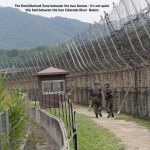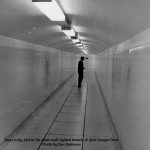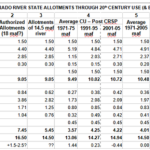From wrong to wrong the exasperated spirit Proceeds, unless restored by that refining fire Where you must move in measure, like a dancer. – T. S. Eliot, “Little Gidding”In a strange mix of grace and craziness, a group of costumed women doing the stately Morris-dance lead down Elk Avenue a much less stately mob that is howling imprecations at a huge puppet on trial for its life, toward a big bonfire into which the puppet and a lot of old skis and grudges will be thrown. Or a midwinter parade comes down the street with masked and costumed krewes letting it all hang out (or as much as is possible in February) before the hibernation into Lent. Or a few hundred people dress up in red costumes and masks and dance to suggestive music in celebration of an event most of the celebrants weren’t around to know about. Or the floor of the Eldo literally bounces to the thunder of hundreds of people dancing to the honk and wail of the accordion as Crested Butteans celebrate the coronation of the new king and queen of Flauschink. Or kids ranging in age from ten to fifty conclude one of Colorado’s biggest and most irreverent Fourth of July parades with what might be the world’s biggest semi-sanctioned water fight in the middle of the street. Vinotok, Mardi Gras, the Red Lady Ball, Flauschink, the Fourth of July – Crested Butte is a town that, in the eyes of its celebrants, knows how to celebrate itself. And these are truly “community celebrations,” even though not everyone in the community participates in them. They are not private parties; they are not expensive occasions for some socioeconomic faction to celebrate itself; they are not (primarily) Chamber of Commerce promotions to bring in more tourists; they are just a large bunch of Crested Butteans celebrating their common appreciation at living more or less together in Crested Butte. There is of course another perception of these events. A lot of Crested Butteans look on these – tasteless public displays! – with disapproval and don’t join in. Some of them see it as “juvenile behavior” that drives away visitors (except when the events are scheduled when there are no visitors, in which case why bother); others find it, even worse, disquieting in its anarchical undertones and worry about the undermining of basic law and order. And some of the participants themselves don’t get it, and undermine the events to the extent that they see it as just another excuse to get wasted and engage in anti-social behavior. So what’s the truth of the matter? Are these community celebrations a positive thing or a negative thing for the community? For any community? I want to try to make the case for why they are basically a good thing – even an essential component of a healthy community. It’s an appropriate time to do this; this winter will end with the 40th celebration of Flauschink, an end-of-winter festival that has never pretended to have any socially redeeming value but, arguably, has had some. And as one who was present at its creation, I’m as good as any to make that argument. Crested Butte in 1969, year of the first Flauschink festival, was still a town without a foreseeable future. Seventy-five years of coal mining had ended in the mid-1950s with the closing of the mines and dismantling of the railroad tracks. For the following decade and a half, the fraction of townspeople who had stayed courted just about anything that came along. A parade of new owners and lessees tried to get the Keystone Mine on Mount Emmons going throughout the 1950s and 60s with no lasting success. The ski area began in 1961 but went through a major “financial reorganization” in the mid-60s and was still just hanging on in a very competitive environment in 1969. Dr. Hubert Winston Smith’s Law-Science Academy was a bright spot in the summer; there were the dependable but slightly distant “bugologists” up in Gothic all summer; and there were a few mid-westerners building summer homes in the area. But in sum, the town had no identifiable economy. So why was it so much fun to live here? As novice editor of the town’s newspaper, I thought about that a lot. I had had no background or preparation for either the position or for informed thinking about what makes a community – but I’m not sure that even Ph.D.s in Journalism, Economics and Political Science would have helped me answer that question. But even I could see one thing that made a difference: the presence of people for whom hard times economically had been a way of life for many generations. Those were the Butte’s “old timers,” the people whose parents had come from subsistence economies in Europe destroyed by either industrialism or war or both together, bringing and raising families into the worst living environment in the American industrial economy, a coal-mining town. Underground coal mining, the most dangerous and brutal work in the American “melting pot” – a pressure-cooker that filled from the bottom. Those who were still here in the 1960s were the ones who had outlasted the coal mines here; they were either retired from the coal mines on pensions that hadn’t been there until their saint John L. Lewis had wrung them out of the owners, or they had escaped from the mines by having managed to save and borrow enough to buy into a business. Here because they either had no reason to leave, or couldn’t afford to. Either way, they possessed the native wit, physical stamina and stoic sense of humor that had kept them and their parents before them human on the “rag ships” from Europe, and through the generations of life as “chattels” going back to feudal times, people with a millennial history of figuring out how to make life worth living in economies that offered very little (if any) opportunity to “improve themselves” economically. And mixed in with them were handfuls of us new people – mostly a bunch of spoiled exurban and suburban hippies like myself who accepted the evidence from our pre-CB lives that “money doesn’t buy happiness,” and wondered what else there was that might. Mostly college graduates from the world’s richest and most domineering economy, our post-graduate education was in a place without a real economy, in the company of teachers who were used to that absence of what seemed to rule life everywhere else in America. Among other things, they taught us to hang together by hanging out together like they did (easy lesson), and they taught us to dance. A harder lesson: I’d always thought of dancing as personal artistic expression, and the more beer I had, the better an artist I seemed (to myself) to be. But Mrs. Gal Starika, of Frank and Gal’s Bar and Restaurant, told me at a dance in her bar in 1968 that she was either going to have to teach me to dance right or kick me out. What she taught me wasn’t dance steps but respect; I learned that you aren’t really dancing unless the whole room is dancing – everyone “moving in measure,” as T. S. Eliot put it. It is individual only to the extent that every individual’s good time depends on every individual taking care of everyone else’s good time. Learning to dance with the whole room made it more fun. And in some intuitive kind of way, that education seemed to lead to the need for something like Flauschink. The exact origins of Flauschink are best left shrouded in the ever-evolving myths and mysteries, which get better every year. But the basic truth is that it is indeed a local revival of an old European custom – brought to Crested Butte by the people who came to Crested Butte as refugees from Europe’s Industrial Revolution: the custom of turning a lot of life’s entries, exits, changes, or just going to the post office as a tradition, into an excuse for coming together to talk, eat and drink, dance, tell stories, and otherwise get merry. God knows the daily round of life itself, whether in the master’s fields or his coal mines or tending his ski lifts, didn’t produce a whole lot of reasons for the joy we are now supposed to find in our work; the people who survived were the ones who found or made the time to organize some collective joy with each other. Lest you think I’m just bloviating in defense of my own bad habits, I will note that a respected American writer came out this year with an exhaustive study that affirms that late-60s intuition (and its European origins): Dancing in the Streets – A History of Collective Joy, by Barbara Ehrenreich – author before that of Nickel and Dimed and Bait and Switch, two studies of economic life today, the first about the working poor and the second about workers struggling to stay in the middle class. In Dancing in the Streets, Ehrenreich drops back in time to examine one fundamental difference between pre-industrial societies and our contemporary industrial society: the absence today of what she calls the “ecstatic rituals” prevalent in virtually every traditional pre-industrial society worldwide. She focused primarily on medieval European cultures for which we have some written record, and found that in many parts of Europe during the height of Christian feudalism, as much as one day in every four was given over to community festivals for one Christian saint or another – and those “sanctified” holidays were only “Christian” because the pioneer church leaders had simply fastened a saint’s name onto already-existing pagan festivals. She provides substantial evidence that what we moderns have been schooled to think of as “the Dark Ages” were really not so depressing as we try to make them out to be. People worked hard with no hope of “advancement,” but they also played hard, in community-wide playing that no longer happens in the mainstream society. Most parties today are acknowledgements of divisions in the society – college keggers, country club balls, fundraisers for specific organizations attended by their supporters, and private parties of “our kind of people.” Ehrenreich describes another type of party that bonded whole communities on a regular basis, and she proposes that such hearty partying might be a necessary element for a successful human community. So why isn’t it part of modern culture? She shows us that, at the beginning of what we think of as the modern era – from the 15th century C.E. on Europe’s ruling elites began to banish the people’s celebrations and festivals. Various reasons were given for this, mostly bound up in the unholy alliance between Protestant theology and the early stirrings of the industrial economy that began with Gutenberg’s invention of the printing press (interchangeable parts and mass production). For the Protestants, the religious festivals were just Romish excesses that came between a person and his or her intimate relationship with the somber and judgmental Protestant god; to engage in any form of dancing, singing, any kind of noisy celebrating, was to endanger one’s soul. And for the economic movers and shakers, this of course tied in very well with the urbanization and industrialization overwhelming Europe, requiring an increasingly disciplined, orderly and docile workforce. “One reason for suppression,” she says, “was a fear that festivities could get out of hand and even lead to revolution.” She also ties in two other important changes emergent in European society during those same transformative centuries: one being the growing separation of “the individual” from the community. Ehrenreich cites literary philosopher Lionel Trilling: “Historians of European culture are in substantial agreement,” he wrote in 1972, “that in the late 16th and early 17th centuries, something like a mutation in human nature took place.” She summarized this “mutation: This change has been called the rise of subjectivity or the discovery of the inner self and since it can be assumed that all people, in all historical periods, have some sense of selfhood and capacity for subjective reflection, we are really talking about an intensification, and a fairly drastic one, of the universal human capacity to face the world as an autonomous �I�, separate from, and largely distrustful of, �them�.” And she points out the correlation between those changes and another important change that began around the same time: an “epidemic of depression” … “melancholy” … which began early in the 17th century and continues, in variations augmented with anxiety, right down to the present. We tend to think of depression as a 20th-century ailment, but Ehrenreich finds substantial literary evidence that depression has maybe just finally come out of the closet in our century. “Something was happening, from about 1600 on,” she says, “to make melancholy a major concern of the reading public, and the simplest explanation is that there was more melancholy around to be concerned about.” Are all of these correlated changes causally connected too? The rise of the Protestant ethic, the suppression of festivals and their “collective joy,” the evolution or revolution of the individual as distinct from the community, and an epidemic of depression? Ehrenreich thinks so; and without positing it as a single-cause solution, she argues pretty convincingly that reintroducing community-level festivals, carnivals and other general opportunities for “collective joy” might help alleviate the massive depression in American society and, in the most literal sense, help each of us to “get over ourself.” I won’t speak for the other revivers of the Flauschink celebration in Crested Butte, but I will say that Crested Butte in the late 1960s cured me, at least temporarily, of the brand of individualism the culture and its chief enforcer, the education system, had instilled in me – the perception that I was a free economic entity contracting with the society around me for what I wanted from it, giving back only what was necessary to get what I wanted. I had never experienced a community till I got to Crested Butte in 1966, which had a community instead of an economy, and was managing to survive. The place also cured me, at least temporarily, of a chronic cynical depression I’d had for so long that I didn’t even know I had it, since it was nurtured and reinforced by most of our contemporary cultural institutions, television foremost among them. I have backslid too often since, into both that toxic individualism and its companion depression; but of all the things that help me get over myself, the surest is getting out and making a fool of myself dancing, with a bunch of people I live with, like or don’t like, enjoy or just tolerate, all doing the same, and all moving in measure, more or less. Another thing that Flauschink has done, for all those in the community that care, is to mark the end of one thing and the beginning of another – not just the end of winter but the end of a season into which we put a lot and (we hope) take out a lot. My first two winters in Crested Butte ended – again in T.S. Eliot’s words – “not with a bang but a whimper.” Or not even a good whimper; everyone just sort of left. For someplace warmer, Mexico or Montrose. But from the first Flauschink in 1969 on through the 39th last year, we’ve “flausched” winter and the ski season and danced in spring (please, please come) with the exuberant acknowledgement such changes deserve in the natural calendar of life. So, at the fortieth celebration of Flauschink – it is what it is, as the other occasions of collective joy in Crested Butte are what they are: just a way to balance out our serious efforts to make something of ourselves by indulging for a bit in collectively making fools of ourselves. I would not pretend that Flauschink or any of the others have helped the economy. Heaven forbid. But I would suspect that I am not the only one for whom they have, if only temporarily, made the economy more bearable, as well as life in general.



